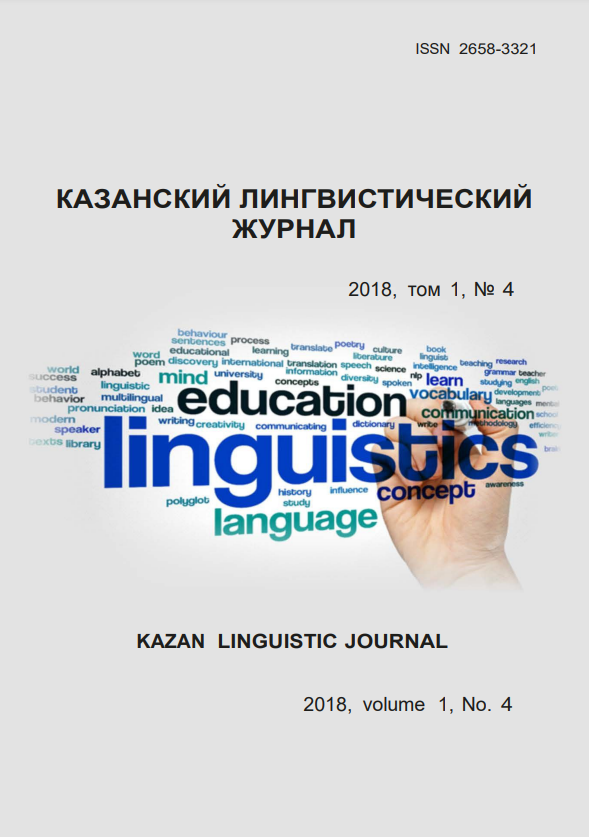Modeling computer technical language by means of property graphs
Keywords:
Linguistics, modeling, computer language, property graphsAbstract
The processing of natural language has become one of the main problems in information exchange. The rapid development of computers has made possible the implementation of many ideas to solve the problems that one could not even imagine being solved automatically, when the first computers appeared. Intelligent natural language processing is based on the science called computational linguistics. Computational linguistics is closely connected with applied linguistics and linguistics in general. Currently, the researchers are mainly interested in the formal description of language relevant to automatic language processing, rather than in purely algorithmic issues. For this reason, in this paper, we present an example about how to model computer technical language by means property graphs, and also describes some features of property graphs using Neo4J database. We state the advantages of property graphs use for modeling computer technical language. Finally, we selected five language properties to represent in the model: Phonology, morphology, syntax, semantics, and pragmatics.
References
Литература
Anderson R., Spiro R., Montague W. Schooling and the Acquisition of Knowledge: Chapter 3. The Languages of Instruction: The Literate Bias of Schooling. London: Routledge, 1977. 443 p.
Bolshakov I.A., Gelbukh A. Computational linguistics: Models, Resources, Applications. Mexico: Ipn-Unam-Fce, 2004. 186 p.
Cleger E. et al. Graph Oriented Model on Neo4j. A free alternative to reduce temporary complexity // Iberoamerican Journal of Project Management. 2017. Vol. 8. No. 1. Pp. 1–17.
Francis N., Green A., Guagliardo P, Libkin L., Lindaaker T. Cypher: An Evolving Query Language for Property Graphs // SIGMOD’18 Proceedings of the 2018 International Conference on Management of Data. Jun 2018, Houston, United States. ACM Press, 2018. P.1433.
Robinson I., Webber J., Eifrem E. Graph Databases. Sebastopol: O'Reilly Media Inc., 2013. 205 p.
Saussure F. Course in General Linguistics. Losada: Open Court House, 1971.
Van Bruggen R. Learning Neo4j. Birmingham. Mumbai: Packt Publishing Ltd, 2014. 201 p.
References
Anderson, R., Spiro, R., Montague, W. (1977). Schooling and the Acquisition of Knowledge: Chapter 3 The Languages of Instruction: The Literate Bias of Schooling. London: Routledge, 443 p. (In English)
Bolshakov, I.A., Gelbukh, A., (2004). Computational linguistics: Models, Resources, Applications. Mexico: Ipn-Unam-Fce, 186 p. (In English)
Cleger, E. et al. (2017). Graph Oriented Model on Neo4j. A free alternative to reduce temporary complexity [Graph Oriented Model on Neo4j. A free alternative to reduce temporary complexity] // Iberoamerican Journal of Project Management. Vol. 8. No. Pp. 1-17. (In Spanish)
Francis, N., Green, A., Guagliardo, P, Libkin, L., and Lindaaker, T. (2018). Cypher: An Evolving Query Language for Property Graphs // SIGMOD’18 Proceedings of the International Conference on Management of Data. Jun 2018, Houston, United States. ACM Press, pp. 1433–1448. (In English)
Robinson, I., Webber, J., Eifrem, E. (2013). Graph Databases. Sebastopol: O'Reilly Media Inc., 205 p. (In English)
Saussure, F., Harris, R. (1998). Course in General Linguistics. Losada: Open Court House, 1971. (In English)
Van Bruggen, R. (2014). Learning Neo4j. Birmingham. Mumbai: Packt Publishing Ltd, 201 p. (In English)






